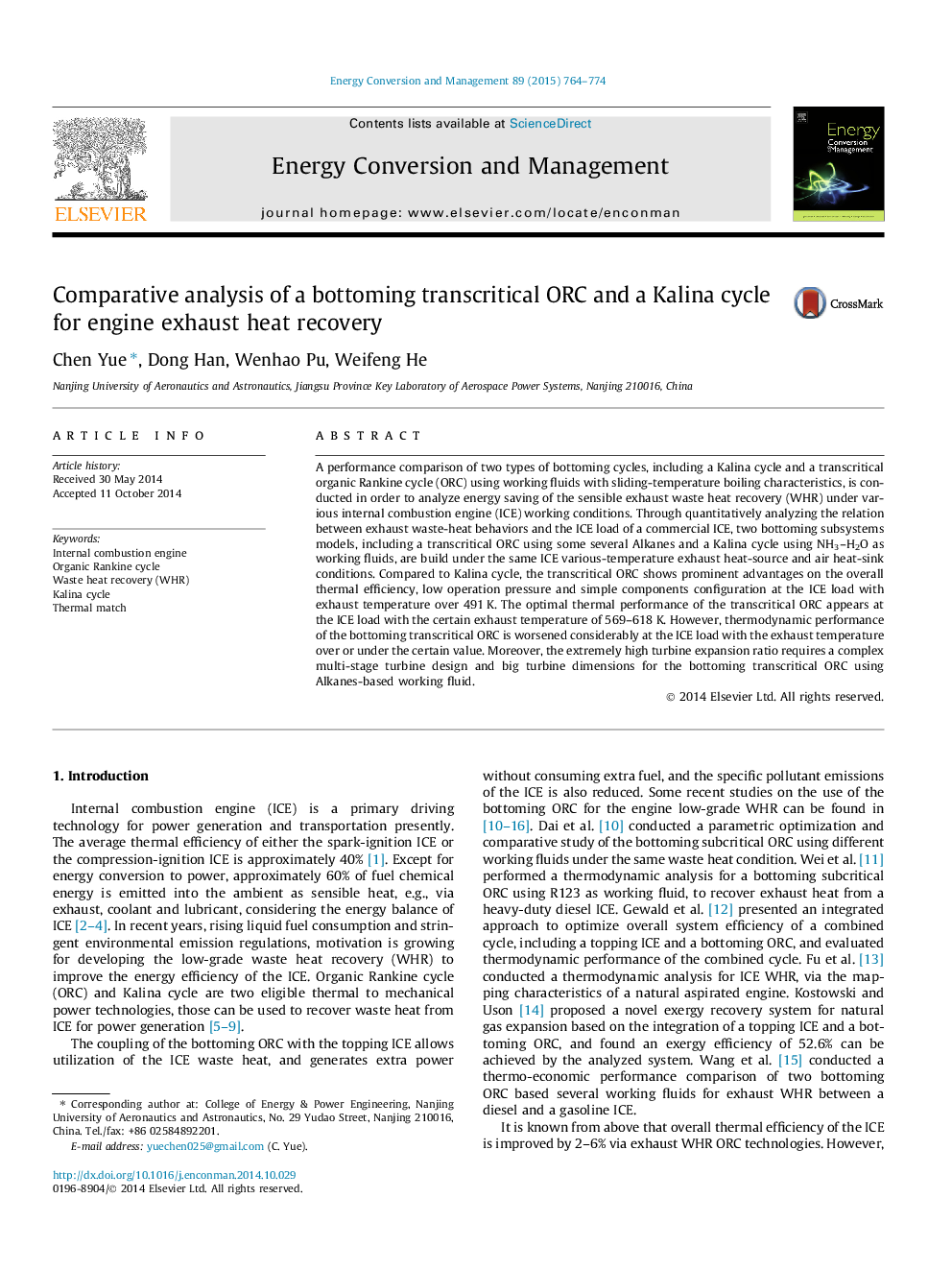| Article ID | Journal | Published Year | Pages | File Type |
|---|---|---|---|---|
| 7163545 | Energy Conversion and Management | 2015 | 11 Pages |
Abstract
A performance comparison of two types of bottoming cycles, including a Kalina cycle and a transcritical organic Rankine cycle (ORC) using working fluids with sliding-temperature boiling characteristics, is conducted in order to analyze energy saving of the sensible exhaust waste heat recovery (WHR) under various internal combustion engine (ICE) working conditions. Through quantitatively analyzing the relation between exhaust waste-heat behaviors and the ICE load of a commercial ICE, two bottoming subsystems models, including a transcritical ORC using some several Alkanes and a Kalina cycle using NH3-H2O as working fluids, are build under the same ICE various-temperature exhaust heat-source and air heat-sink conditions. Compared to Kalina cycle, the transcritical ORC shows prominent advantages on the overall thermal efficiency, low operation pressure and simple components configuration at the ICE load with exhaust temperature over 491Â K. The optimal thermal performance of the transcritical ORC appears at the ICE load with the certain exhaust temperature of 569-618Â K. However, thermodynamic performance of the bottoming transcritical ORC is worsened considerably at the ICE load with the exhaust temperature over or under the certain value. Moreover, the extremely high turbine expansion ratio requires a complex multi-stage turbine design and big turbine dimensions for the bottoming transcritical ORC using Alkanes-based working fluid.
Keywords
Related Topics
Physical Sciences and Engineering
Energy
Energy (General)
Authors
Chen Yue, Dong Han, Wenhao Pu, Weifeng He,
